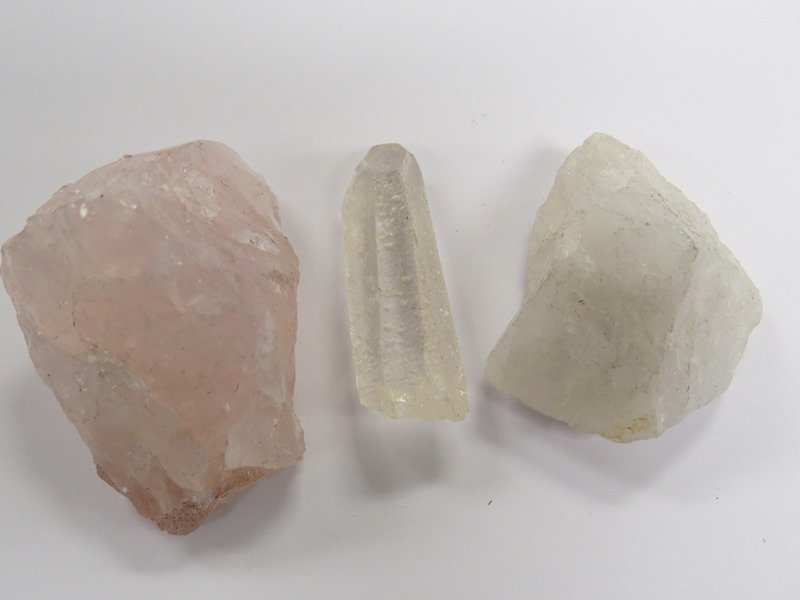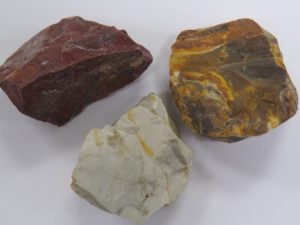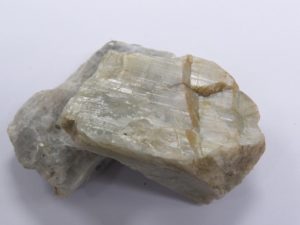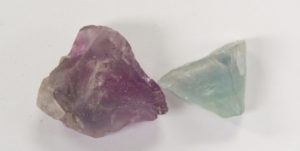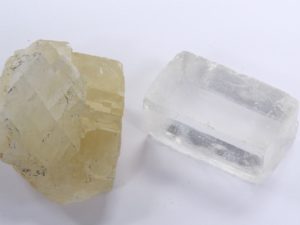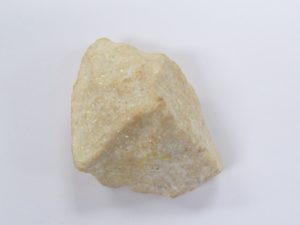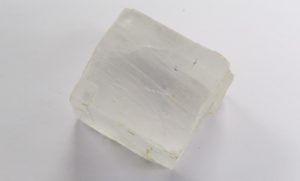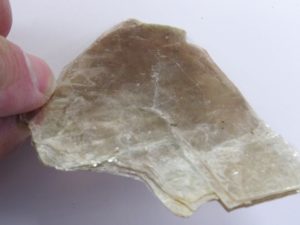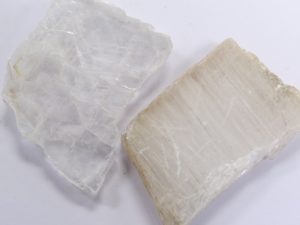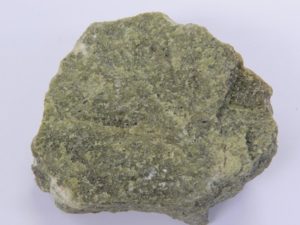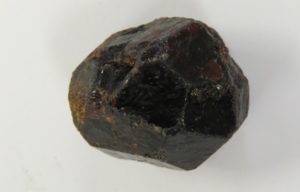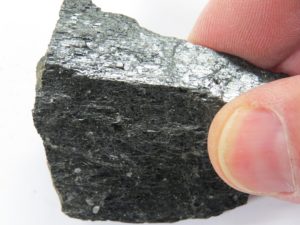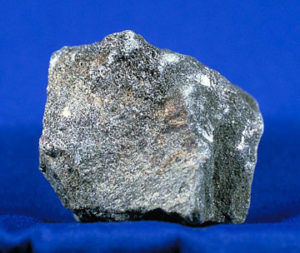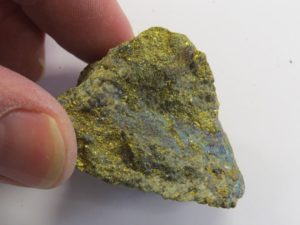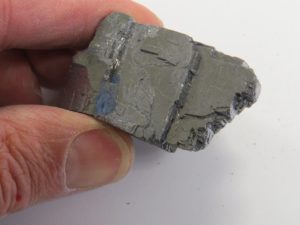14 Classifying Minerals
Classes of Minerals
Minerals are classified according to their chemical properties. Except for the native element class, the chemical basis for classifying minerals is the anion, the negatively charged ion that usually shows up at the end of the chemical formula of the mineral. For example, the sulfides are based on the sufur ion, S2–. Pyrite, for example, FeS2, is a sulfide mineral. In some cases, the anion is of a mineral class is polyatomic, such as (CO3)2–, the carbonate ion. The major classes of minerals are:
- silicates
- sulfides
- carbonates
- oxides
- halides
- sulfates
- phosphates
- native elements
Silicates
Based on the polyatomic anion, (SiO4)4–, which has a tetrahedral shape. Most minerals in the earth’s crust and mantle are silicate minerals. All silicate minerals are built of silicon-oxygen tetrahedra (SiO4)4– in different bonding arrangements which create different crystal lattices. You can understand the properties of a silicate mineral such as crystal shape and cleavage by knowing which type of crystal lattice it has.
An example of common silicate mineral is olivine: (Mg, Fe)2SiO4. ; in this case either cation (Mg or Fe) or both can be present in the mineral.
Sulfides
These are based on the sulfide ion, S2–. Examples include pyrite, FeS2, galena, PbS, and sphalerite, ZnS in its pure zinc form. Some sulfides are mined as sources of such metals as zinc, lead, copper, and tin.
Carbonates
These are based on the carbonate ion, (CO3)2–. Calcite, CaCO3, and dolomite, CaMg(CO3)2, are carbonate minerals. Carbonate minerals tend to dissolve relatively easily in water, especially acid water, and natural rain water is slightly acid.
Oxides
These are based on the oxygen anion, O2–. Examples include iron oxides such as hematite, Fe2O3 and magnetite, Fe3O4, and pyrolusite, MgO.
Halides
These have a halogen element as the anion, whether it be fluoride, F–, chloride, Cl–, bromide, Br–, iodide, I–, or astatide, At–. Halite, NaCl, is a halide mineral.
Sulfates
These have the polyatomic sulfate ion, (SO4)2–, as the anion. Anhydrite, CaSO4, is a sulfate.
Phosphates
These have the polyatomic phosphate ion, (PO4)3–, as the anion. Fluorapatite, Ca5(PO4)3F, which makes your teeth hard, is a phosphate mineral.
Native Elements
These are made of nothing but a single element. Gold (Au), native copper (Cu), and diamond and graphite, which are made of carbon, are all native element minerals. Recall that a mineral is defined as naturally occurring. Therefore, elements purified and crystallized in a laboratory do not qualify as minerals, unless they have also been found in nature.
Mineral Classification Tables
In tables 1–3, hardness is measured on Mohs Hardness Scale. Each table contains a group of minerals according to a specific luster. Luster is one of the first main identification keys.
As you read through the tables, you can click on the images of minerals to see a larger version of the photo.
How to Identify Minerals
First, you need good light and a hand lens or magnifying glass. A hand lens is a small, double-lens magnifying glass that has a magnification power of at least 8× and can be purchased at some bookstores and nature stores.
Minerals are identified on the basis of their physical properties, which have been described in the the previous section. To identify a mineral, you look at it closely. At a glance, calcite and quartz look similar. Both are usually colorless, with a glassy luster. However, their other properties they are completely different. Quartz is much harder, hard enough to scratch glass. Calcite is soft, and will not scratch glass. Quartz has no mineral cleavage and fractures the same irregular way glass breaks. Calcite has three cleavage directions which meet at angles other than 90°, so it breaks into solid pieces with perfectly flat, smooth, shiny sides.
When identifying a mineral, you must:
- Look at it closely on all visible sides to see how it reflects light
- Test its hardness
- Identify its cleavage or fracture
- Name its luster
- Evaluate any other physical properties necessary to determine the mineral’s identity
In the minerals tables that accompanies this section, the minerals are grouped according to their luster and color. They are also classified on the basis of their hardness and their cleavage or fracture. If you can identify several of these physical properties, you can identify the mineral.
An example of mineral identification:
Online minerals and their properties guide, see: https://geology.com/minerals/
